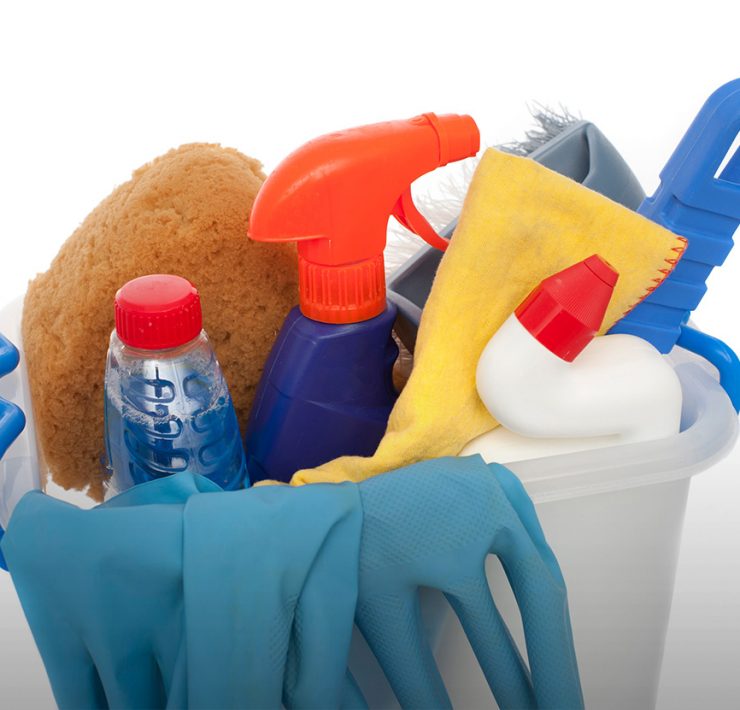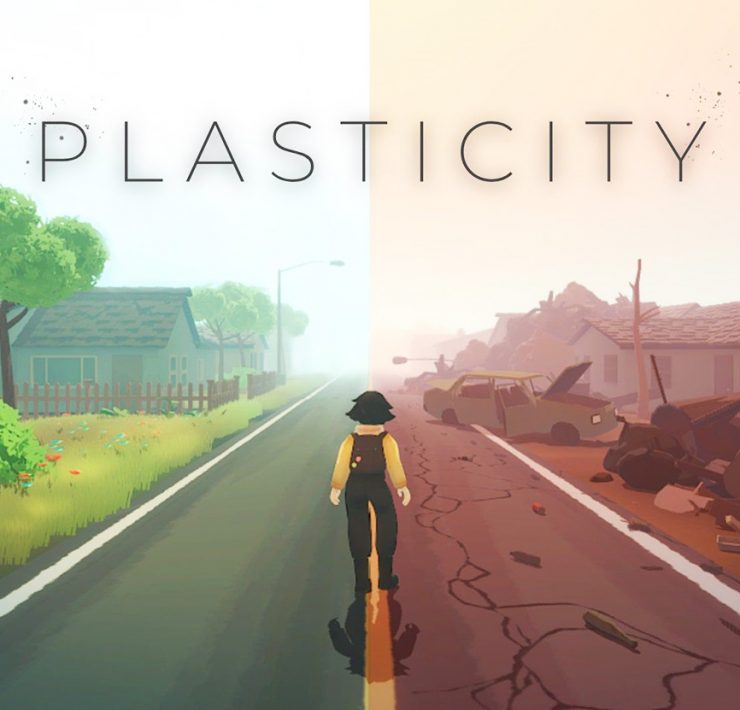A comprehensive guide to sustainable packaging
- How does one navigate their purchasing decisions around packaging to ensure sustainability? The terms and options available only serve to further confuse us. Here’s the packaging guide you didn’t know you needed.

Suchitra is an independent journalist working on social justice with…
By 2050, the weight of plastic waste in seas and oceans around the world will be more than the combined weight of all the fish in them. In India, the plastic manufacturing industry is expected to produce 22 million metric tonnes (MMT) of plastic in the year 2020, up from 13.4 MMT in 2015, according to a FICCI report, and almost half of it is single-use plastic. We are alarmingly close to having our own Great Pacific Garbage Patch.
40% of this plastic produced is for packaging purposes. There is a pressing need to make a shift to more sustainable packaging choices.
Sustainability is a fast-growing concern for enterprises, since customer preference for green products is on the uptick. Consciousness about plastic with respect to one’s health and environment is definitely rising.
Sustainable packaging refers to packaging with an environmental footprint that reduces over time. In packaging, sustainability can typically be achieved in three ways:
1) Materials: 100 % recyclable and/or eco-friendly packaging raw materials
2) Method of production: Production processes and supply chains with smaller carbon footprints
3) Recyclability: A circular economy, wherein the lifecycle and usefulness of the package is extended
Although sustainable packaging is mostly about saving the environment, what is eco-friendly is not necessarily sustainable; the economic and social aspects of packaging must also be taken into account. That being said, sustainable packaging needs to be competitively priced as compared to conventional single-use packaging options to seem viable. Sustainable packaging design is designing product packaging with the main purpose of doing as little harm to the environment as possible.
Which materials are sustainable?
People usually use the adjectives eco-friendly and sustainable interchangeably, though that can prove incorrect. A material’s biodegradability cannot ensure sustainability. Furthermore, a lot of companies engage in greenwashing, thus underscoring the importance of knowing what’s what.
When it comes to packaging and making more sustainable decisions, choosing material alternatives like aluminium, glass, and paper is based on variables such as: the raw material used, production costs and processes, transport footprint, and recycling rate.
Consider aluminium cans: Aluminium is considered a sustainable alternative mostly because it contributes comparatively less to ocean waste. The benefits of using aluminium lie in recycling it, if the recycling network in your area is strong. Aluminium can be recycled countless times and studies say that 75 per cent of aluminium produced is still in use today; it has proven to be the world’s most recycled material. Furthermore, since aluminium is light and cans allow for effective use of space, it requires less transportation than plastic or glass bottles, and its thermal conductivity necessitates less power for chilling beverages. It, however, has its own environmental costs: aluminium is mined as bauxite, the extraction of which creates a lot of pollution and the production of which pumps about twice as much carbon into the atmosphere as the production of plastic. At its most polluting amount, a 330ml aluminium can can be blamed for 1,300gms of carbon dioxide emissions, approximately equal to the pollution emitted by running a car for 8kms. A plastic bottle of the same size is liable for up to 330gms.
How about paper, that famously popular eco-friendly packaging option? Paper production requires way more energy than plastic manufacturing — the numbers differ for different types of paper packaging, but on average, the energy consumption is about three times more. Paper also generates more emissions in its transport than plastic by virtue of being heavier. According to PAC Worldwide, the typical corrugated box weighs 0.7 pounds, compared with 0.5 pounds for a bubble wrap, resulting in higher fuel consumption and automotive emissions.
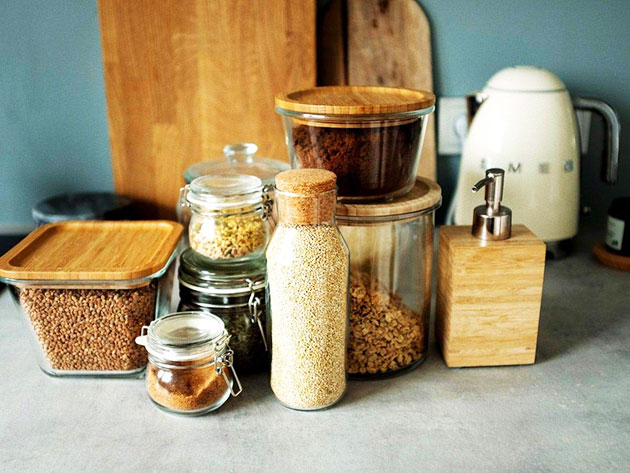
Glass bottles are often viewed as more sustainable than their plastic counterparts, mainly because they can be reused, though in the long run, they may not be as sustainable as PET. Yes, glass bottles can be cleaned and sterilised in boiling water rather easily, but the same goes for PET bottles: you can re-use them several times by washing them with warm water. Glass, however, is highly breakable, making it difficult for manufacturers to work with it. Moreover, glass contributes to higher transport emissions because it is heavier. Compounding the issue, glass packaging does not always make it back to the manufacturers for reuse or recycling, and tinted glass can’t be bleached to return it to clear glass. Glass bottles would be the way to go only when recycled aluminium cans are not an option.
What works, then?
An under-appreciated packaging material option is agricultural waste like bran, husk, and hay. Research suggests that agricultural waste as a packaging raw material has been found to have the least adverse impact on the environment so far. Materials such as bagasse (sugarcane crop waste) are already being widely used. Agricultural waste is a great option in India because we annually generate 500 million tonnes of it.
However, it is good to remember that while choosing sustainable packaging materials is important, sustainable packaging design might play an even bigger role in reducing packaging waste. The fact is that material alone cannot do the job of achieving sustainability. Better design can ensure that the packaging material used is recyclable in whatever form it is used in.
Several brands like Corugami and Ecoware have sprung up in response to the growing demand for sustainable packaging.
Corugami provides sustainable packaging to various brands and startups. They have worked with brands like Moonshine Meadery, Hamley’s, and The Bombay Canteen, to name a few. They help these companies choose not just sustainable materials, but with packaging design too. India does not have a good waste sorting system to rely on, which complicates the matter of recycling materials.
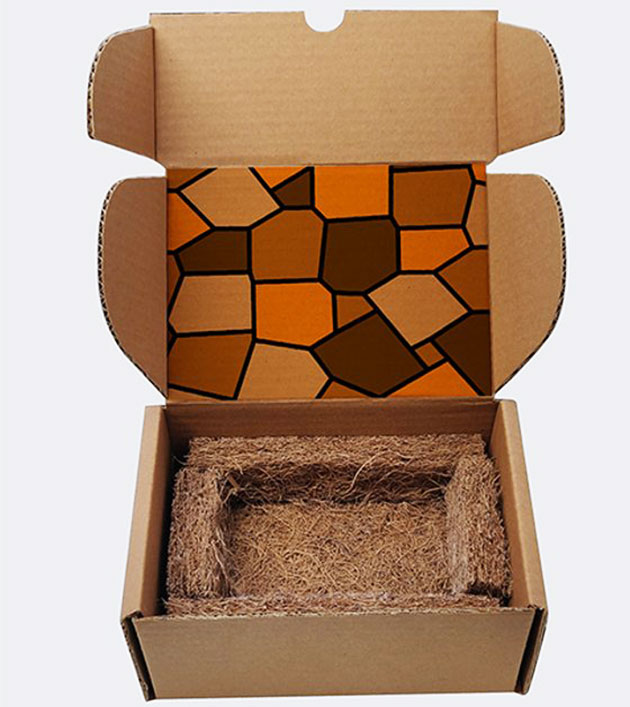
Udit Bansal, chief ideator at Corugami, says, “Sustainability doesn’t have to be expensive. Design and structure solutions can strike a balance between sustainability and cost. For example, insulation is often achieved by using plastic bubble wrap. But it’s not the plastic that insulates, it is the trapped air. We are experimenting with paper honeycomb, agricultural waste, coir, and other materials in order to trap air the same way. A lot of packaging made of industrial paper in India is assumed to be compostable, though it is not actually compostable at home. It requires industrial composters, which are not easily accessible to individuals. A few solutions are already in front of us. Agricultural waste from North India, for instance, can be used as an alternate material for sustainable packaging. Burning of agricultural waste is one of the contributors to seasonal smog in North India,” he says. “We don’t necessarily need to do away with all forms of plastic. Single-use plastic should be avoided and for other types of plastics; we need sustainable design to enable easy segregation of different materials, and stronger channels for sorting and recycling.”
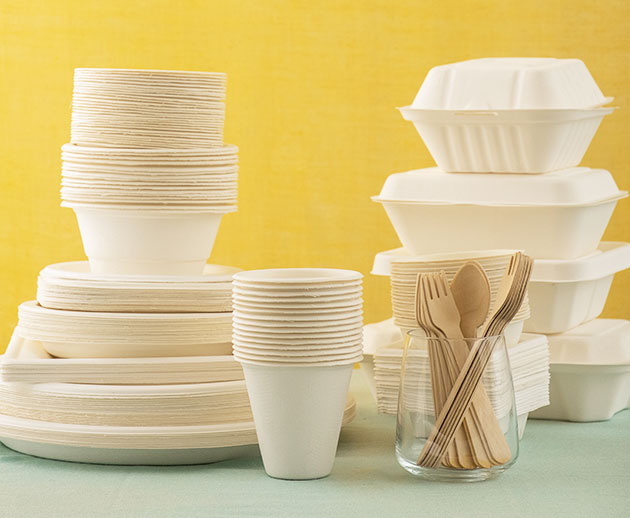
Ecoware, meanwhile, turns common crop waste, most commonly wheat, rice, or bagasse (sugarcane) waste, into sustainable packaging alternatives. Rhea Mazumdar Singhal, founder of Ecoware, says she wants people to at least think about their own health, if they don’t think about sustainability. “Our products biodegrade naturally in 90 days, and do not contribute to landfill waste at all,” she says, “When we started, sustainability wasn’t a very common subject, so we had to incur costs to raise awareness. Now, however, we have narrowed down the cost differences, making most of our products maybe five per cent more expensive than single-use plastic alternatives, or maybe not even that! The products at Ecoware have the same shelf life as plastic products, and are very durable as well.” Ecoware provides crop-waste-based disposable packaging for the Indian Railways, Haldiram’s, Subway, and several food startups, including home chefs and bakers.
What can you do? First, know your plastics
Your first step as a conscious consumer is to understand your plastics. Plastic packaging comes with a variety of recycling symbols that could leave you puzzled. Consumers always believe this code means a package is recyclable immediately, but that is not the case.
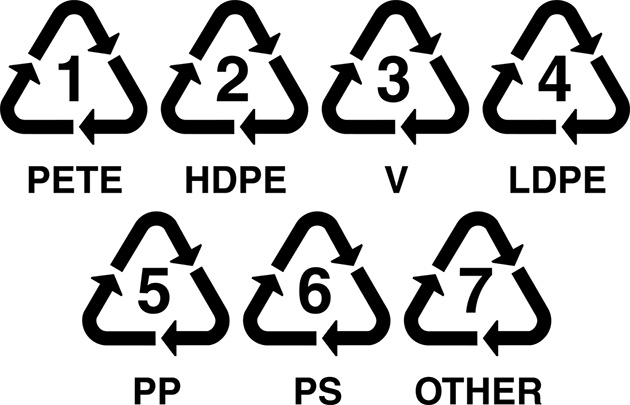
‘Resin Identification Codes’ — the triangle with arrows — indicate the plastic type used in that particular piece of packaging. Plastics with code 1 are polyethylene terephthalate — PET or PETE — and include bottles used for soft drinks, as well as wrinkle-free fabrics. Coke/Pepsi bottles are PET bottles; they are considered safe for food storage, and can be recycled, but only once.
Plastics with codes 3, 6, and 7 cannot be recycled under standard recycling procedures and may pose harm to human and animal health, and the environment. It is thus advisable to avoid these altogether. Code 3 plastics are polyvinyl chloride (V or Vinyl or PVC), and are used in toys, mouthwash boxes, medical tubes, and blood bags. PVC is a harmful plastic and can induce childhood allergies, asthma, endocrine dysfunction, and ADHD, and is also severely carcinogenic in nature. Code 6 (polystyrene) plastics are used to make egg cartons, plastic packets and bins, disposable cutlery, CDs and DVDs, medication bottles, hangers, portable sticks, smoke alarms, and petri dishes. They can leak styrene, a carcinogen also found in second-hand smoke.
Plastics with codes 2, 4 and 5 are considered the safest to recycle. Opaque milk, juice, and water cans, certain drug bottles, and shampoo and detergent bottles, use Code 2 plastic (polyethylene or HDPE). While HDPE is generally considered one of the safest plastics for use in a limited amount, research has shown that it can leach nonylphenol, an endocrine disruptor, particularly when exposed to the sun. Bread packaging, shopping bags, and frozen food packaging use Code 4 plastic (polyethylene or LDPE). These are also relatively safer and easier to recycle, as long as they are not in the form of thin films.
Code 5 plastics (polypropylene or PP) includes food containers such as cheese and curd cups, ketchup and syrup, bottle tops, straws, baby bottles, diapers, sanitary pads, and many components in devices and vehicles. This plastic is relatively safe, but has been associated with occupational asthma causation.
Code 7 or Other (O) is an omnibus category that covers packaging made from plastics other than the six previously mentioned, or multi-layered mixtures of plastics. Code 7 plastics cannot be recycled.
Even though plastics with codes 1, 2, 4, and 5 plastics are recyclable, they’re only recyclable finitely. Most plastic is downcycled — turned into other products such as doormats, textiles, and plastic lumber. These products will eventually reach a point where they cannot be recycled or downcycled any more, and will end up in a landfill. Recycling plastics, thus, is simply a means of delaying the inevitable. The best way to reduce plastic waste is reducing the consumption of plastic.
How does one do that?
To achieve true sustainability, reducing consumption is the way to go. Starting your low-waste journey involves making ‘instead of’ choices. For instance, instead of buying packaged foods for midnight-snacking, you can munch on healthier alternatives such as carrots. This is both healthier and more sustainable. You can also make other small changes such as choosing soap bars instead of shower gels and carrying a reusable water bottle.
You can also reduce your consumption by repurposing products. You could use bottles or jars as planters; personal care product containers can be used to store other things such as loose dish soap. The options are endless!
Switch to sustainable brands
Sustainable brands use materials, packaging, and production processes that are designed to last, be fair and environmentally sustainable, and offer good value. By moving to ethically-made and organic products, you guarantee that not only is your environmental impact very minimal, but that the product you are purchasing has not exploited employees or used child labour. Brands such as No Nasties, Howrah Bridge, Maga, Mantra are great eco-fashion brands, whereas Raw Nature, Pahadi Local, Forest Essentials, EcoBuddy, and Laiqa are great for sustainable beauty products.
Go local, or DIY
If you want to cut consumption even further, you can make things yourself, or support local businesses. If you want to buy bread, buy it from local bakeries, or even better, bake some yourself (using flour sourced from a local mill as opposed to the packaged variety, of course).
You could make your own toothpaste instead of purchasing on a tube, or even make your own bio-enzyme-based cleaning essentials instead of using chemical cleaning products sold in plastic packaging.
While there are adjustments we can make in the goods we use and the materials used to package them, our focus should be on choosing to live a less wasteful lifestyle. Recycling, or downcycling, is not the answer; it’s more of a last resort. The goal should be to reduce and reuse. The way to reduce consumer packaging waste is to make better choices about what and how much we purchase. While it would be wonderful to have a definitive answer to what packaging is most sustainable, the reality isn’t so simple.
The only solution at the macro level is to advocate for policies that have more accountability for producers, while at the micro level it is to remove the need for packaging altogether by reducing consumption and learning to live a less disposable lifestyle.
Suchitra is an independent journalist working on social justice with a specific focus on gender justice. Reading, smashing gender norms and stationery gets her very excited!




